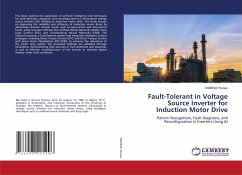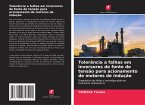This book explores the application of artificial intelligence (AI) techniques for fault detection, diagnosis, and reconfiguration in a three-phase voltage source inverter (VSI) feeding an induction motor drive. The study focuses on improving the reliability and efficiency of induction motor drives by addressing common inverter faults, such as open-circuit and short-circuit faults, using AI-based methods like Artificial Neural Networks (ANN), Fuzzy Logic Control (FLC), and Convolutional Neural Networks (CNN). The research proposes a fault-tolerant system that integrates intelligent control strategies, including Direct Torque Control (DTC) and Direct Torque Control with Space Vector Modulation (DTC-SVM), to enhance the robustness of the motor drive system. The proposed methods are validated through simulations, demonstrating high accuracy in fault detection and diagnosis, as well as effective reconfiguration of the inverter to maintain system stability under fault conditions.
Bitte wählen Sie Ihr Anliegen aus.
Rechnungen
Retourenschein anfordern
Bestellstatus
Storno









